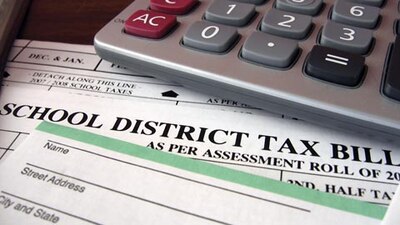Colorado voters could face a $1 billion decision on school funding in the November 2013 election, if a complicated two-step reform plan plays out as its backers hope.

Discussions about the issue have been underway for more than a year but have intensified in recent weeks. Backers now plan to make school funding a top issue for the 2013 legislative session – and they hope to have a bill passed by mid-March.
“It will probably be the most important education bill we will see this session,” Christine Scanlan, Gov. John Hickenlooper’s top lobbyist, told a meeting of the governor’s Education Leadership Council last week.
Supporters of finance system reform, led by Democratic Sen. Mike Johnston of Denver, hope to achieve their goals in two steps. First, they want the legislature to pass a thorough modernization of the state’s school finance formula. Then they plan to ask voters for the money to support the new system. If the public doesn’t approve the necessary tax increases the new funding system wouldn’t go into effect.
Johnston’s partner in the effort is Sen. Rollie Heath, D-Boulder and author of a proposed tax increase for education that voters rejected in 2011.
Johnston describes the effort as a way to begin dealing with both the inadequacy of school funding and the inequity in the way it’s distributed. “Our theory of change was that we were working toward a grand bargain to build a 21st century school system,” he says.
In recent years education reform legislation and school budget cuts have focused attention on the stresses facing Colorado’s education system. Supporters of reform and more funding think the timing is right to accomplish both goals because of public concern about budget cuts, the improving economy, strong voter support for local school tax increases this year and Democratic control of the state legislature.
And some of those involved in the discussions believe a 2013 school-funding solution should be followed in 2014 by what’s the called the “big fix” – a proposal to straighten out the conflicting provisions of the state constitution that hamstring the legislature’s ability to raise revenue.
The plan faces plenty of challenges before it gets to the final test of a public vote on higher taxes. While there’s broad agreement among many education interest groups on the need for reform, disagreements may emerge after specific provisions of the plan are crafted. Supporters also will face the challenge of raising money to gather petition signatures and run an expensive campaign.
And the Colorado Supreme Court could rule on school finance in the middle of everything else, adding a new complication. A district court judge last year found the state’s school finance system is unconstitutional. The case, Lobato v. State, now is on appeal to the Colorado Supreme Court, and a decision is expected next spring.
The plan
“Nothing is on paper yet. We’re in that phase where we’re gathering input,” Chris Watney of the Colorado Children’s Campaign told the Education Leadership Council last week. Her group has been at the center of finance reform discussions over the last year and a half.
But Johnston has been sketching out the outlines of his plan in recent meetings. “We have a fundamental problem with adequacy, and we don’t provide an equitable system,” he said last week. “Solving both of those problems ought to be our work.”
Here’s what he proposes to do about the adequacy of school funding:
Eliminate what’s called the “negative factor”: In recent tight budget years, the legislature has used a device – the negative factor – to reduce K-12 funding from what it otherwise would have been under previous interpretations of the funding formula. It’s estimated that use of the factor has cut school funding by more than $1 billion in recent years. Early childhood: Johnston wants to fund half-day preschool for all at-risk 3-year-olds, full day for at-risk 4-year-olds and pay for full-day kindergarten for all families that want it. Special education: Funding for these programs would be increased so school districts no longer would have to shift money from other programs to meet federal mandates for education of special ed students. The current shortfall is estimated at up to $500 million a year.
On the issue of equitable funding, here’s what Johnston suggests:
Funding weights: The current funding system gives individual districts extra funding based on such “factors” as area cost of living, numbers of at-risk students, district size and others. Johnston would like to increase base funding and reduce or eliminate some of the factors but increase money for at-risk students. Enrollment counting: Current per-pupil funding is based on enrollment counts tallied during a small window around Oct. 1. Johnston advocates a different method that counts students throughout the year so that funding more accurately reflects actual enrollment. Student-based funding: Education reformers of various stripes are increasingly interested in targeting funding on individual schools to meet student needs, rather than essentially giving block grants to districts. Johnston supports that concept but hasn’t yet fleshed out how that could be done. “It is the practicality of doing that that is extraordinarily difficult,” Scanlan observed last week. Increasing local support of schools: State constitutional provisions controlling government spending limits and property taxes have forced almost two-thirds of K-12 spending onto the state. Johnston and many others would like to shift that balance somewhat, likely by requiring districts in wealthier areas to spend more local money. “This is the single hardest problem in the debate right now,” Johnston said. “We’re trying to figure out what’s legal and what’s practical.”
Finally, Johnston would like to create an “innovation fund” that could be used to help districts try out homegrown education reforms.
The costs
The state and local districts currently spend about $5.4 billion a year on basic school operating costs. Districts receive additional funds from the federal government, and some districts have extra, voter-approved property tax revenues that aren’t included in base spending.
At a meeting last week of what’s called the Technical Advisory Group, which Johnston has used as a sounding board on school finance, he estimated the cost of his suggested reforms at more than $2.75 billion.
But no detailed plan has yet been developed for a proposal to voters. “I don’t know what that tax package is going to look like,” Heath said at a meeting last week.
The prospects

Both Johnston and Heath are confident a bill to change the school finance formula can pass in 2013, despite the complexity of the issue and the high percentage of new lawmakers – about a third – in the legislature.
“It’s going to come out of both houses of the legislature. I’m sure of that,” Heath said.
“Our priority is to move this in the session early,” Johnston said. “We’d like to see this done by St. Patrick’s Day … so we have time to build a statewide coalition” for the tax increase that would be needed to fund the new system.
Johnston also warned against the temptation to enact some parts of the plan as individual bills. “If you nickel and dime parts of the package away you lose the political power you need for the grand bargain.”
Hickenlooper, whose term has two years to run, hasn’t weighed in publicly on the school finance discussions. Heath said, “I would think the governor will sign it (a finance bill),” and he also believes the idea is in line with some of the recommendations of TBD Colorado, a public engagement process started by the governor to gauge citizen opinion on major issues facing the state. (See this story on the TBD proposals.)
Asked last week by The Associated Press about the tax implications of TBD, Hickenlooper said, “I think it’s still premature to say that we’re going to the ballot with a tax increase in 2013, or 2014, or 2015.”
Backers of the plan want to put the tax increase before voters by petition rather than having the legislature directly put a proposal on the ballot. That latter method would require a two-thirds vote in both houses, and it might be opposed by anti-tax Republicans. Johnston wants as many Republicans as possible behind his reform of the funding system.
While the full cost of a new finance system probably is higher, proponents are talking about asking voters for some $1 billion in new revenues, considered an amount that could be passed.
Gail Klapper of Colorado Forum, a business-oriented group that has been studying state fiscal reform, told the Technical Advisory Group last week about polling, focus groups and door-to-door opinion research that the forum commissioned.
She said that research found the public supportive of schools, concerned about recent budget cuts but skeptical about politicians.
“Coloradans want to have an excellent school system … and they’re willing to put additional revenue on the table to do all that,” she said while cautioning “It’s not going to be the billions and billions were just heard discussed here.”
The bigger constitutional picture
Heath believes voters should be presented with an even bigger issue in 2014 – reform of the Taxpayer’s Bill of Rights, the Gallagher Amendment and Amendment 23.
Without cleaning up those conflicting fiscal limitations, Heath and many others believe an education tax increase in 2013 would have only a short-term benefit. An education-funding boost alone “isn’t going to solve the problem in the long run,” Heath said. “This isn’t one and done.”
How the idea got started
The last revision of the state’s school funding formula was done in 1994, long before enactment of recent reform requirements like the Colorado Achievement Plan for Kids and the new educator evaluation system. Periodic legislative studies since then have produced much information but no significant changes in the formula.
Last year the Children’s Campaign launched a group named the School Finance Partnership that held a series of meetings involving a wide variety of education and civic groups.
Those discussions led to a preliminary report that was issued last March (see story). That paper was long on broad concepts and short on details, but Johnston promised to propose legislation during the 2012 session. That never happened. (An expanded version of the partnership’s report was issued in August – read it here.)
Other voices
Other interested parties, including State Board of Education member Paul Lundeen and Independence Institute researchers, have been discussing even more sweeping changes to the school finance law, focusing on rewarding successful districts and schools and significantly shifting funding toward individual student needs – something they call “backpack funding.”
Speakers at a recent panel discussion aired some of those ideas. Find out more about that panel here and watch a video of the event here.
